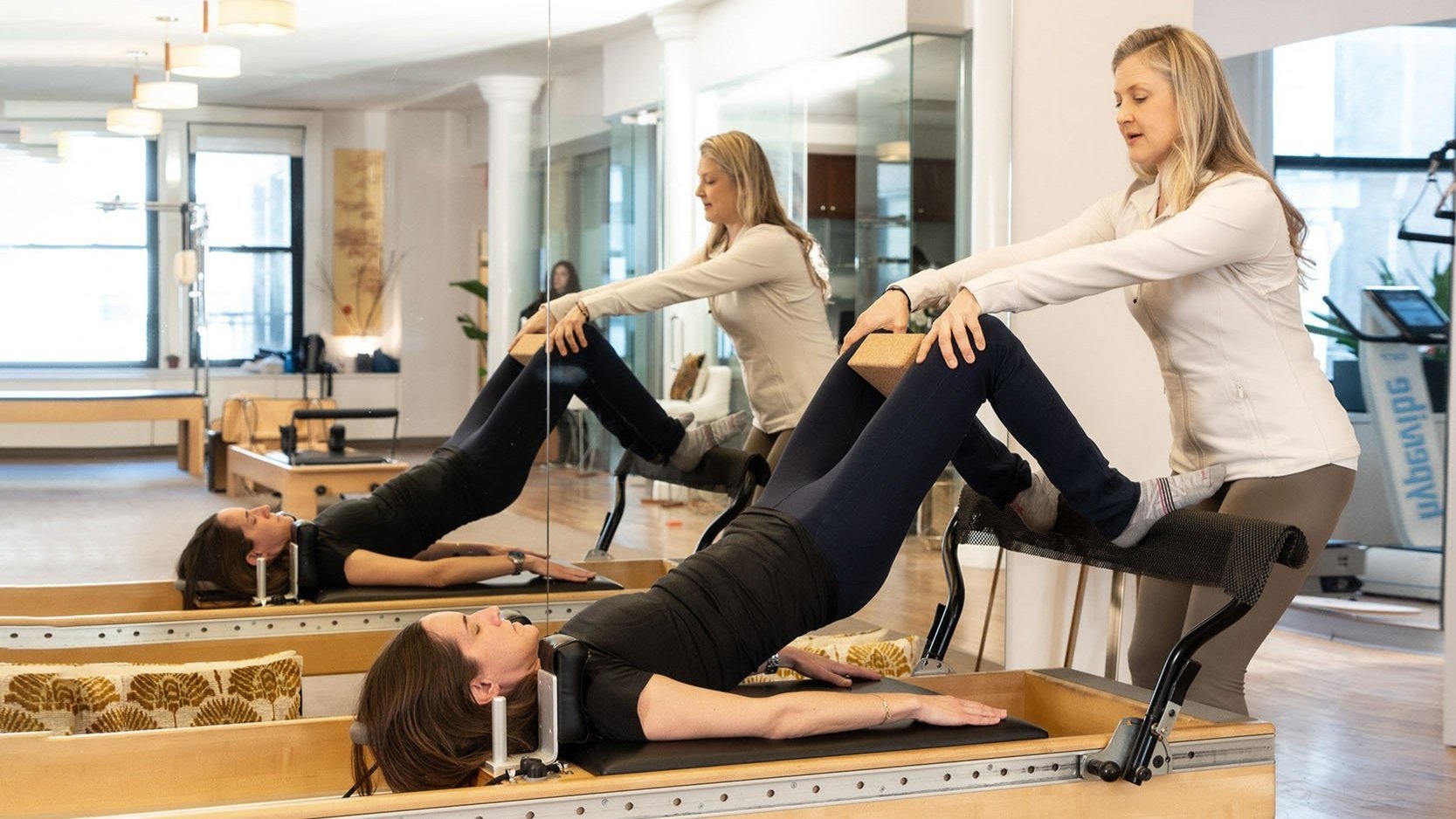Clinical Pilates Benefits and More 2024
Clinical Pilates has emerged as a powerful tool in the realm of rehabilitation and injury recovery. This article aims to provide an insightful journey into the world of clinical Pilates, offering a clear definition, a brief historical perspective, and emphasizing its pivotal role in rehabilitation.
Clinical Pilates Physical Benefits
According to the Pilates Method Alliance, the goals and benefits of Pilates are: Coordination, Strength, Mobility, Efficient Movement, Flowing Movement, Mental and Spiritual rejuvenation, self-awareness, sefl-confidence, restoration of natural animal movement, Integration of Body, Mind and Spirit, Sense of Well-Being and Enhanced Quality of Life.
Clinical Pilates uses traditional and evolved Pilates exercises as a part of a physiotherapy program and as part of the post-treatment wellness program. Knosis Clinical Pilates instructors create individual programs collaborating with physical therapists to assist and enhance treament plans. Clinical Pilates targets specific muscle groups, using Pilates and Physical therapy principles, enhancing core function and improving posture. These physical benefits contribute to the restoration of proper biomechanics as well as efficient and pain-free movement.
Clinical Pilates Rehabilitation Benefits
Clinical Pilates uses traditional and evolved Pilates exercises as a part of a physiotherapy program and as part of the post-treatment wellness program. Knosis Clinical Pilates instructors create individual programs collaborating with physical therapists to assist and enhance treament plans. Clinical Pilates targets specific muscle groups, using Pilates and Physical therapy principles, enhancing core function and improving posture. These physical benefits contribute to the restoration of proper biomechanics as well as efficient and pain-free movement.
Clinical Pilates Instructors use Pilates exercises and equipment to assist with Rehabilitation and Post-Rehab exercises. The Pilates Reformer, Trapese Table, Barrel, Chair and other Props, provide effective assistance and proprioceptive feedback for closed chain and psuedo-closed chain exercises. Coordinating proper breathing with precise movement makes Pilates an effective rehabilitation tool. It aids in recovery and injury prevention by training the deep stabilizers of the cervical, thoracic and lumbar core, improving posture, balance, flexibility and strength thorugh the body. Clinical Pilates accelerates healing through pain-free movement in a safe environment, providing a holistic approach to restoring physical health.
Clinical Pilates Psychological Benefits
Beyond the physical realm, Pilates stimulates the parasympathetic nervous system. The mind-body connection fostered in these sessions can positively impact mental health.
Clinical Pilates History and Principles
Joseph Pilates was born in 1883 in Germany. As a child he was sickly but overcame his health conditions with physical activity. During the First World War he served in a hospital at the Isle of Man working with injured soldiers unable walk. It was there he attached springs to beds for injury rehabilitation creating the first variation of the Pilates equipment known as the Cadillac or Trapeze Table. In 1923, he emigrated to the U.S. with his wife Clara and in 1926 opened a ‘body-conditioning gym’ in New York City. Joseph wrote 2 books Your Health and Return to Life Through Contrology. His Contrology exercises are known as the foundations of the classical Pilates mat repertoire.
Joe based his work on Three Guiding Principles: Breath, whole-body health and whole body committment. Whole-Body referring to body, mind and spirit.
His evolved Movement Principles are Whole Body Movement, Breathing, Balanced Muscle Development, Concentration, Control, Centering, Precision, Rhythm and provide a foundation for effective execution.
The exercises in his system are born from gymnastics, calesthenics, weight-training, yoga, dance, aerial arts, martial arts, boxing and other movement systems, creating a well-rounded, an intelligent and a familiar movement system. It’s simplicity and familiarity make it appealing and accessable to many populations.
According to the Pilates Method Alliance, the goals and benefits of Pilates are: Coordination, Strength, Mobility, Efficient Movement, Flowing Movement, Mental and Spiritual rejuvenation, self-awareness, sefl-confidence, restoration of natural animal movement, Integration of Body, Mind and Spirit, Sense of Well-Being and Enhanced Quality of Life.
Clinical Pilates Key Techniques/ Essential Exercises
Demonstration of essential exercises targeting different muscle groups offers practical insights for both beginners and seasoned practitioners. Safety precautions and guidelines ensure a secure and progressive journey for all participants.
Clinical Pilates vs. Traditional Pilates
Highlighting the key differences between clinical Pilates and traditional Pilates, this section provides valuable insights into which approach is more suitable for rehabilitation and injury recovery.
Incorporating Clinical Pilates into Rehabilitation Programs
Real-world success stories through case studies or testimonials showcase the transformative outcomes of incorporating clinical Pilates into rehabilitation programs. Guidance for physiotherapists and healthcare professionals on seamlessly integrating clinical Pilates into treatment plans is also provided.
Clinical Pilates Program
This section outlines factors to consider when selecting a clinical Pilates program or instructor, helping readers make informed decisions. Recommendations for reputable clinics or studios offering clinical Pilates sessions add practical value.
Clinical Pilates FAQ
Addressing common queries, this section provides clarity on various aspects of clinical Pilates, including its differentiation from traditional Pilates, suitability for back pain and sports injuries, associated risks, optimal session frequency, instructor qualifications, impact on flexibility and mobility, exercises for specific medical conditions, equipment used, and the timeline for visible results.
By offering comprehensive information and addressing pertinent questions, this article aims to serve as a valuable resource for individuals on their journey to rehabilitation, Pilates enthusiasts, and healthcare professionals seeking to integrate clinical Pilates into their practice.

